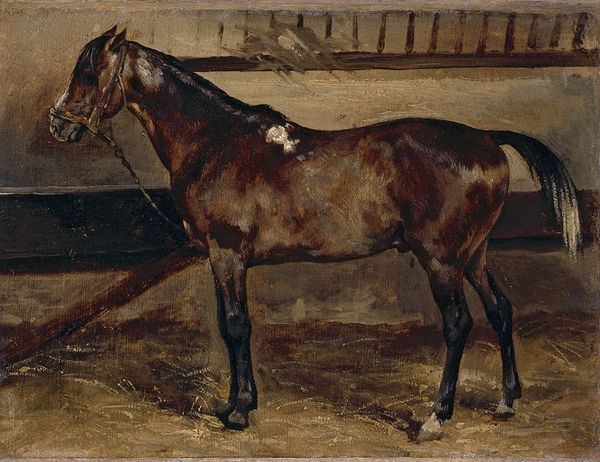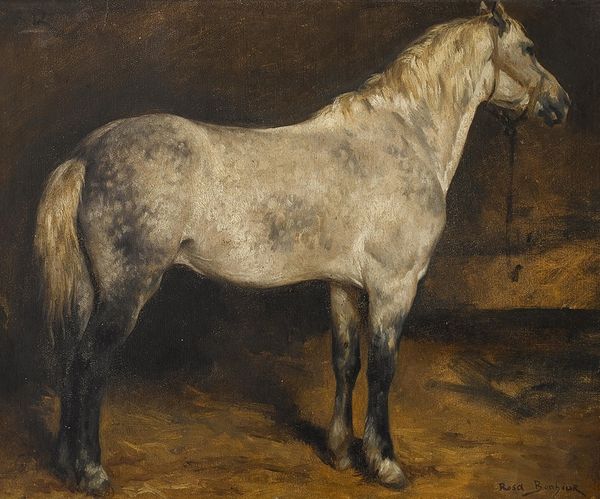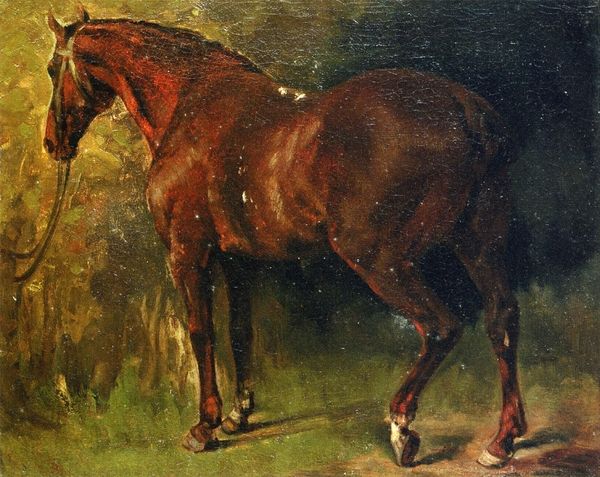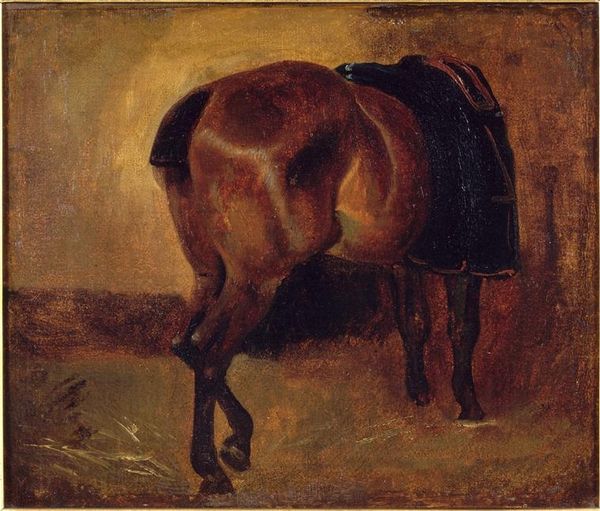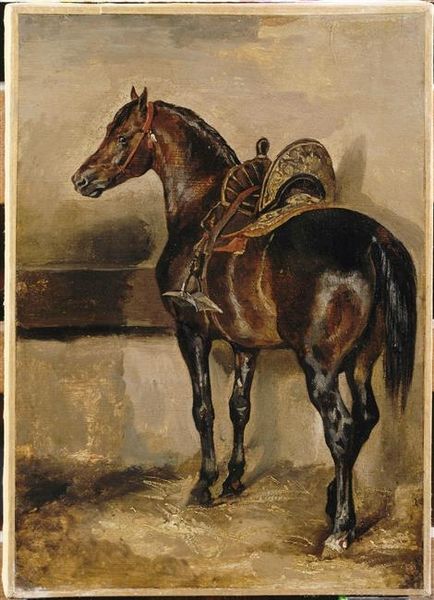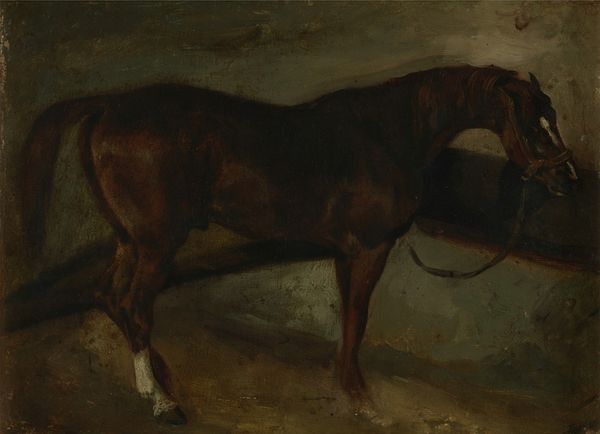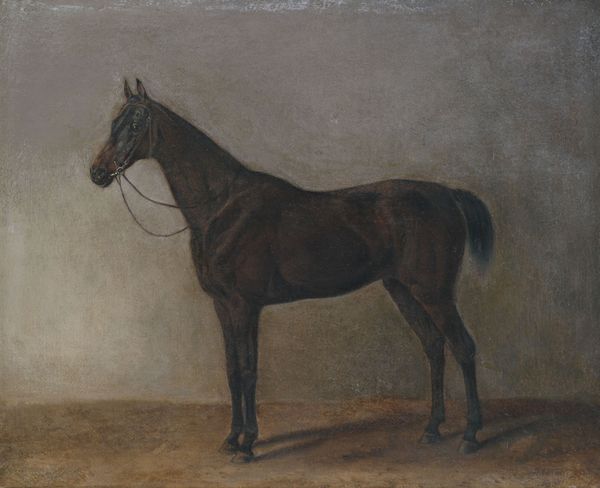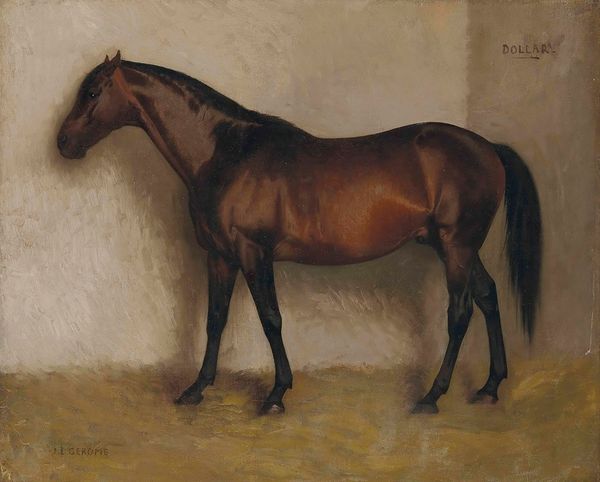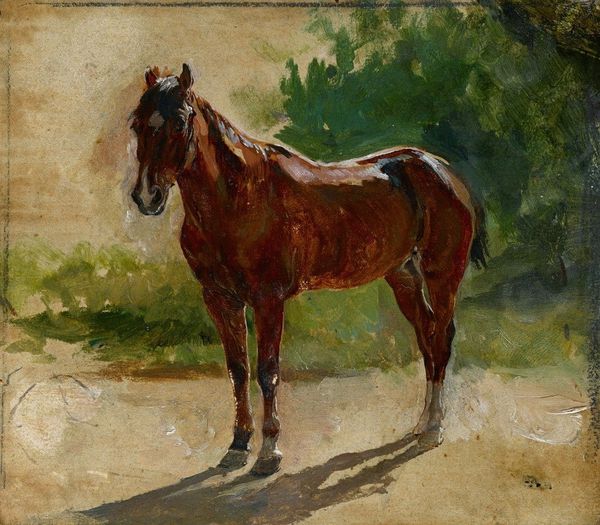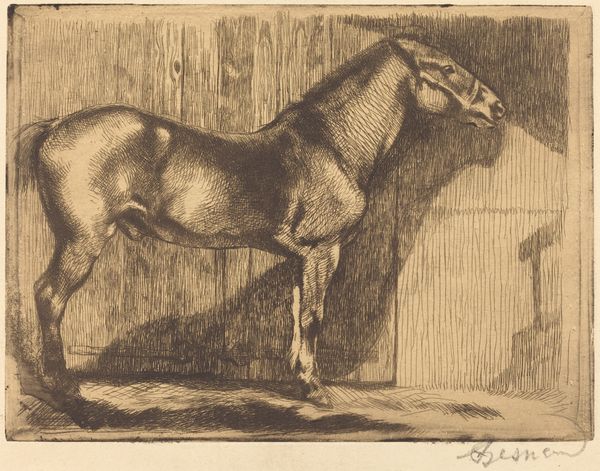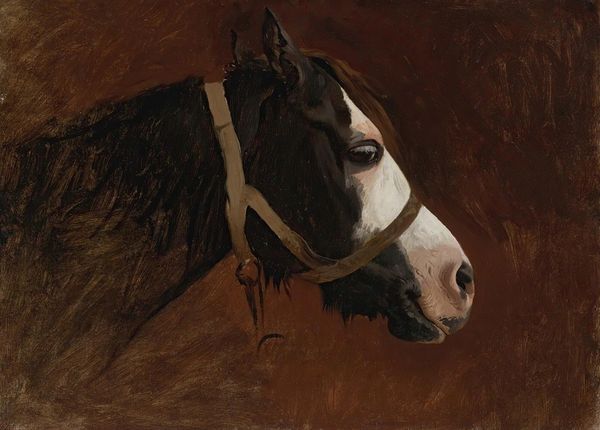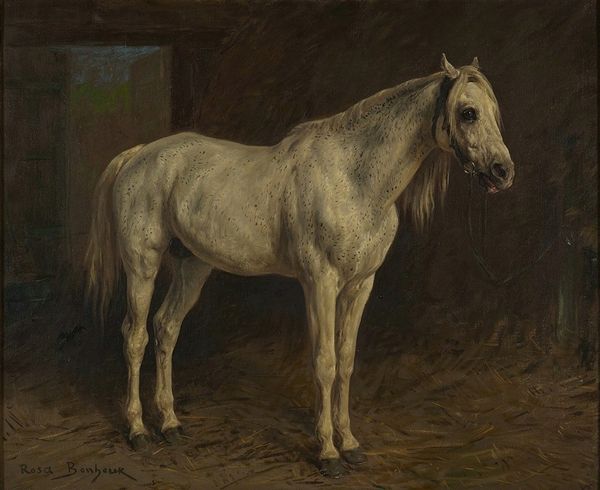
painting, oil-paint
#
painting
#
impressionism
#
oil-paint
#
oil painting
#
animal portrait
#
genre-painting
#
realism
Dimensions: 13 x 32 cm
Copyright: Public domain
Curator: Let’s spend a moment looking at "Balzano Horse," crafted by Giovanni Fattori around 1885. It's a beautiful oil painting. What strikes you initially? Editor: The animal feels posed and dignified. There is something archetypal about the horse, perhaps linked to our perception of animals in rural Italian society? Curator: That's a great starting point. Fattori's work often highlights the realities of rural life and military life. Looking at the technique, observe how he's used oil paint, with visible brushstrokes that give the work a raw, almost unfinished quality. This was very much in keeping with his Impressionist tendencies, showing a real moment in time. I'm wondering, how do the material choices relate to your perception of dignity in the image? Editor: Interesting question! To me, horses often symbolize labor or freedom. Given Fattori’s socio-political leanings, the material roughness seems intended to remind us that such a proud beast is often just a means of production within its landscape. But that the dignity isn't erased by servitude. Note that even its lower legs still bear the white markings of a “balzano,” lending the title and subject an individual importance despite its probable economic role. The little dog sitting patiently nearby suggests friendship as well, don't you think? Curator: It certainly could! It adds a sentimental layer, a narrative element, however straightforward it seems. Consider also that Fattori lived through significant periods of upheaval and war; so that "servitude," that dependence on material means, would've been a pressing consideration. And if the raw brushstrokes suggest immediacy, they are a record of facture, of artistic labour – not unlike the horse's. Editor: It underscores, perhaps, how intertwined all labor is: painter, animal, land, even patron. To shift away from solely that interpretation though: the horse also strikes me as having ties to classical equestrian statues, powerful symbols of command. I find myself pondering its cultural connections to myth. Curator: Right. There's tension. It appears real, captured on canvas in a moment but stands timeless and monumental. And thank you, it's fascinating to me how Fattori’s approach blends technical expression with a tangible awareness of both artistic labour and societal forces in creating such an arresting image. Editor: It really does synthesize many cultural, social, and psychological layers. Examining artworks with others illuminates so much.
Comments
No comments
Be the first to comment and join the conversation on the ultimate creative platform.
